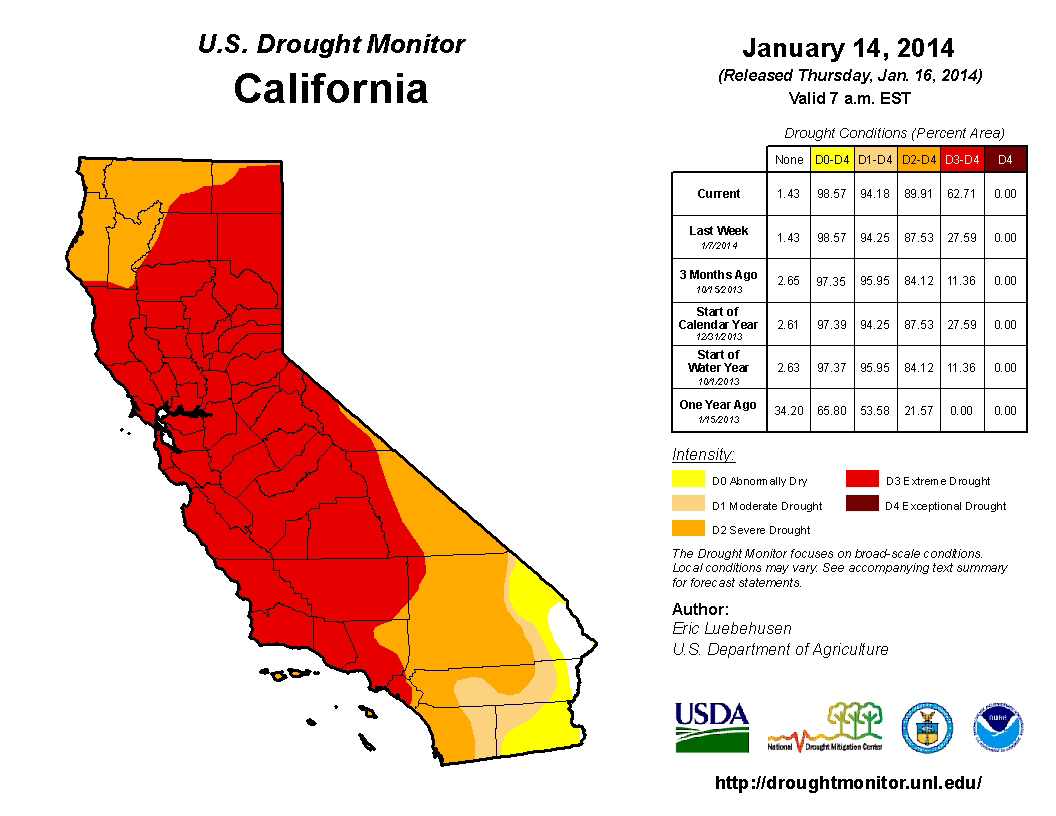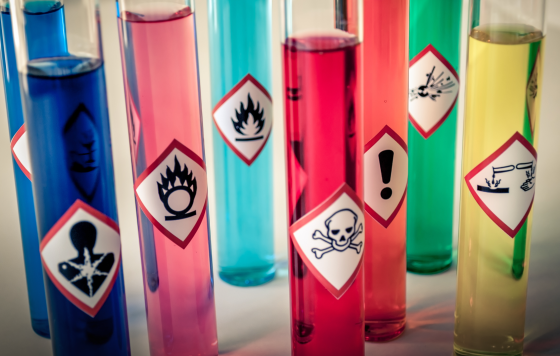
Two drought declarations made headlines this week – first the US Department of Agriculture, then Governor Brown, made official what we all already knew. California is in the midst of a severe drought, and the environment, agriculture and communities are all feeling the pain. A drought declaration will provide resources to assist those most impacted – including, we hope, the thousands of farmworker families that will lose their jobs as agricultural fields are fallowed for lack of water.
It’s said that the worst time to plan for a drought is when you’re in one. While it’s true that a drought can prompt some poor and hasty decision-making, it also focuses everyone’s attention on water, and provides an opportunity to make fundamental changes in our management and oversight of water to better prepare for the next drought. Clean Water Action has long been a supporter of locally sustainable and resilient water supplies that can be used to diversify our supply, enhance our communities and reduce reliance on environmentally damaging water diversions. To promote that vision, Clean Water Action is pursuing the following state actions for making our local water supplies more resilient:
Groundwater regulation.
California does very little to regulate groundwater. In recent years, some progress has been made in collecting information about groundwater quality and groundwater levels, but groundwater oversight is still an unwieldy combination of local approvals, court adjudications, and voluntary management, with limited state oversight. Groundwater is a critical resource, providing up to 40% of the state’s water supply most years, and over 50% in drought years. Yet recent studies show that California’s aquifers are being critically overdrafted. Ensuring that our groundwater aquifers are sustainably managed – for both water supply and water quality - is the most important thing state policy makers can do to prepare for the next drought.
Recycled Water.
In our water-constrained state, it’s a bad habit to use water once and throw it away. For example, coastal cities continue to discharge billions of gallons of wastewater into the ocean each day, impacting the coastal environmental and wasting water that’s been diverted from the environment at great cost. Several agencies are interested in following the lead of Orange County, which cleans its wastewater to potable levels and uses it to recharge their groundwater supplies. But the state has lagged in setting recycled water regulations to ensure the health and safety of these projects. A task force has been appointed (with Clean Water Action representation) to develop those regulations in 2014.
Water Bond.
In 2009, another dry year, the legislature placed an $11.14 billion bond on the state ballot. Don’t remember it? That’s because it has been postponed twice and is now on the November 2014 ballot. It’s too large, and is focused on enabling dams and the peripheral tunnels project. In 2013, the Senate and the Assembly began the development of bond measures to replace it. Those very inclusive and informed discussions should produce a better bond that focuses on local supplies like stormwater and recycled water, and provides local green jobs. Clean Water Action has been at the forefront of these discussion and has helped to focus attention on safe drinking water and water quality needs.
Managing water in California means planning for a day when it doesn’t rain. It’s not raining in California now, and hasn’t since December of 2012. Droughts require two concurrent strategies; conserving water now, and planning for a smarter future. We look forward to working with our members to successfully achieve both.


